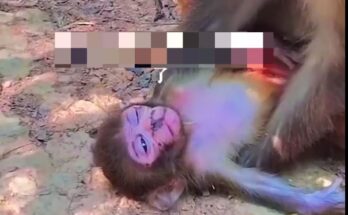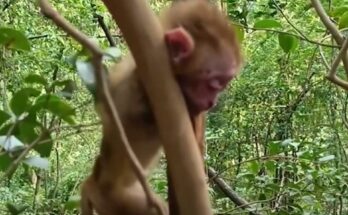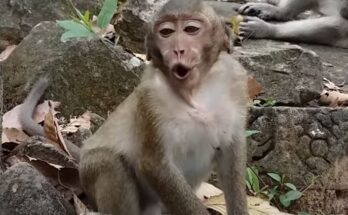Monkeys, like humans, go through a natural process of weaning their young as they grow older. Weaning is the gradual transition of a baby monkey from relying solely on its mother’s milk to eating solid foods and becoming more independent. This process is both crucial and challenging, as it marks a significant developmental milestone for the baby monkey.
The weaning process often begins when the baby monkey reaches a few months of age, depending on the species. The mother starts to encourage the baby to explore other food sources, such as fruits, leaves, and insects, which are part of their natural diet. However, baby monkeys can be resistant to weaning. They often cling to their mothers and demand to nurse, using cries and physical attachment to express their reluctance to let go of the comfort and security that nursing provides.
For the mother, weaning is a delicate balance between nurturing and encouraging independence. She may gradually reduce nursing frequency or physically push the baby away when it attempts to nurse. This can be a stressful period for both the mother and the baby, as the mother must assert her boundaries while ensuring the baby gets enough nutrition from other food sources.
Interestingly, weaning is not just about food; it also involves social and emotional growth. During this time, the baby monkey learns to forage, interact with other members of the troop, and develop the skills needed for survival. Mothers play a critical role in guiding their young, often demonstrating how to find and handle food.
Although it may seem harsh to an observer, the weaning process is essential for the baby monkey’s development. It prepares the young monkey for independence, teaching it to thrive within its social group and adapt to the challenges of its environment.


